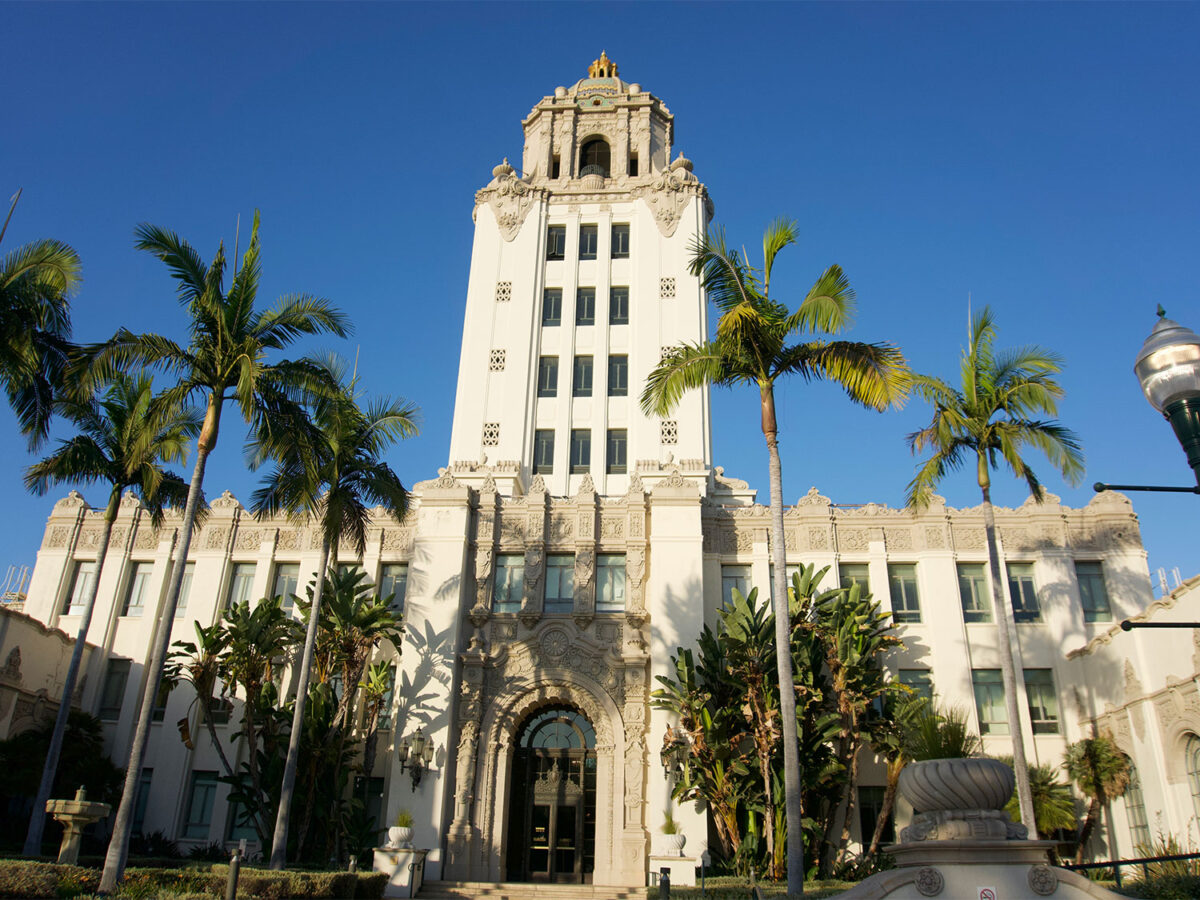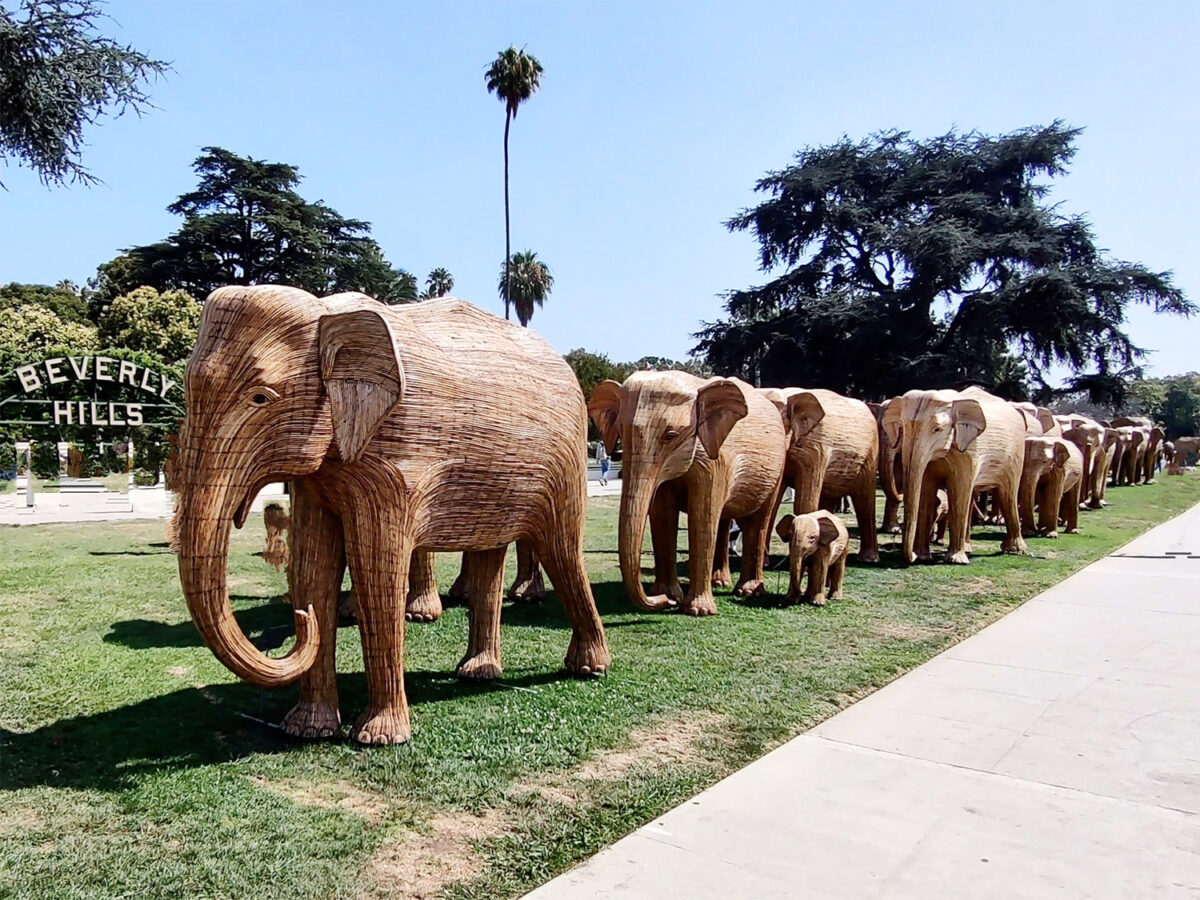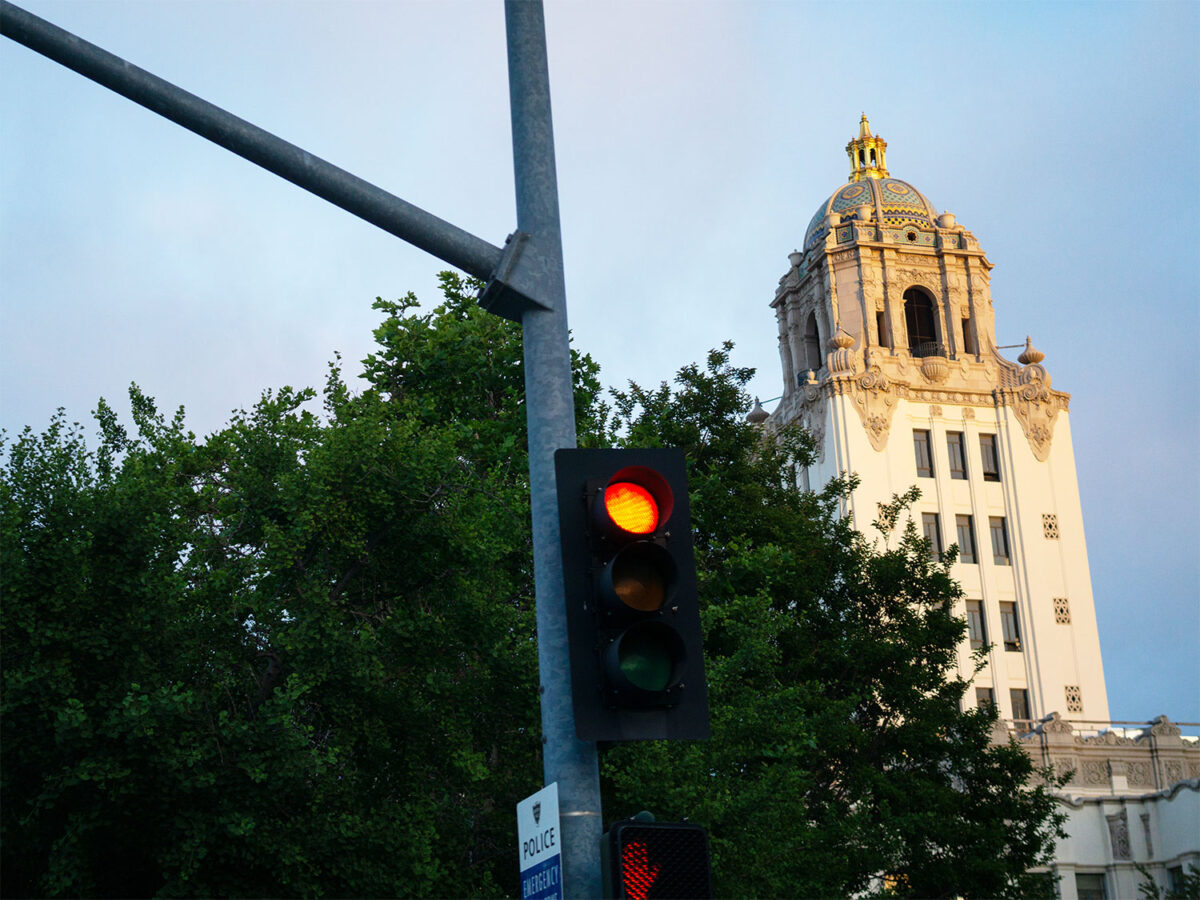From the ninth floor of the tower at Beverly Hills City Hall, the traffic on Santa Monica Boulevard is quiet. Rodeo Drive and the surrounding shopping district look tiny. Inside, the ninth floor is stripped to bare walls and deserted. The iconic tower was closed in 1989 and has stood abandoned for more than 30 years. Now that is about to change.
A multi-phase project to reoccupy the tower with city offices is underway, and key to the restoration is a seismic retrofit slated to start in the next few weeks. It is expected to take nine to 10 months and cost about $9 million.
“It’s a very exciting project for me,” said Beverly Hills City Architect Mandana Motahari, who is leading the project. “It’s a historic building. Architecturally it’s a gorgeous building, and bringing life to those abandoned floors is very rewarding.”
The larger civic center surrounding the original City Hall building was completed in 1990, and with that project the tower closed. Since then, regulations have changed around seismic safety.
“We know these days a lot more about the seismic performance of buildings,” Motahari told the Courier. “We did some computer modeling and it was recommended to strengthen the tower.”
While the tower remains in “fair” condition, according to Motahari, the retrofit is necessary to allow it to be occupied safely, but there are some challenges.
The tower’s footprint extends down through the main City Hall building to the ground floor, so strengthening it requires minimal invasiveness. The project designers have to work within the historical building code, which restricts changes to historical landmarks like the city hall building.
“With preservation, you want to make sure you don’t modify the building aesthetic in any way and this project doesn’t,” said Motahari. “When we do the strengthening we don’t touch any of that historic fabric. A lot of thought went into strategizing how to do this work so once we are done it’s as if it was there all the time.”
City Council discussions regarding the funding and initiation of the project started 2018 but were postponed due to budget constraints caused by the COVID-19 pandemic. Now the plan is back on with a reduced scope. Some of the previously planned improvements to the interior remain postponed, and for now the project is focused on retrofit.
Eventually, the city plans to restore interior aesthetics like the historic flooring, and a new elevator will be installed. Improvements to make each floor fit for offices are expected in later phases.
There have been talks of eventually allowing public access to the tower’s lowest floor and possibly the main building’s roof deck below the tower. But this could prove unfeasible and the city has not yet made plans for how office space inside the tower will be used.
The City Architect’s office is taking it one step at a time. The first step is making the tower safe, said Motahari.
So far, work has been done to clear out hazardous materials like lead paint that were commonly used at the time the building was constructed. Clark Construction Group has been awarded a contract with the city to do the retrofitting. Clark has worked on several historic buildings in Los Angeles County, including the Hall of Justice, Los Angeles City Hall and the Rose Bowl.
“No two historic building projects are the same,” said Clark’s Senior Vice President Marc Kersey in an email statement. “And each has its own unique characteristics, including the use of old construction materials, hidden details and nontraditional original construction techniques. This requires teams to come up with creative approaches through project delivery.”
The City Hall building was constructed in 1932 and originally housed most of the city government, including the City Council, police department and the public library. The latter had once been inside the tower itself, according to the Beverly Hills Historical Society.
“It’s a miracle that it was built at all,” Phil Savenick, president of the historical society, told the Courier. “The fact that it was built in 1932 at the height of the Depression is a tribute to the people who founded the city. They had enough clout to say let’s put people to work and start building.”
The tower dominates the Beverly Hills skyline and is recognized for its intricate belfry, green tiled dome and gilded cupola.
“What’s remarkable about it is the exquisite workmanship that went into the building,” said Savenick, noting the building’s modified Spanish Renaissance style, mosaics, terrazzo tile floors, ceiling carvings and world-class art installations.
Once renovations are complete, the tower will look exactly as it has for almost 90 years.







